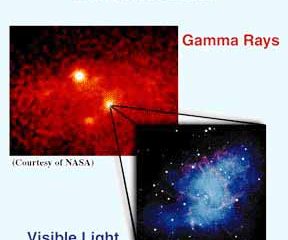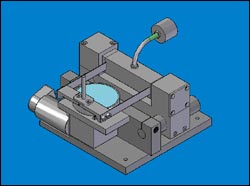This area deals with the fundamental laws and building blocks of nature and how they interact, the properties and the behavior of matter, and research into space and time and their structures.
innovations-report provides in-depth reports and articles on subjects such as astrophysics, laser technologies, nuclear, quantum, particle and solid-state physics, nanotechnologies, planetary research and findings (Mars, Venus) and developments related to the Hubble Telescope.

A European team based in Heidelberg (Germany) and their colleagues from the HEGRA collaboration have discovered a new, unidentified, very high energy gamma-ray source in our Galaxy. This source was detected via ground-based observations of the Imaging Atmosphere Cherenkov Telescope System.
This system of five telescopes is designed to detect the light produced when high energy particles enter the Earth’s atmosphere. The discovery of this source, TeV J2032+4130, is of particular

A powerful new microscope, currently available only in three universities in Europe and the USA, will position Britain as a leading centre for nanomaterials, researchers announce today.
The ultra-high performance analytical electron microscope (AEM) will support research programmes at the London Centre for Nanotechnology (LCN), an interdisciplinary collaboration between Imperial College London and University College London.
It will provide researchers with extremely hig

A long look at a young pulsar with NASA’s Chandra X-ray Observatory revealed unexpectedly rapid cooling, which suggests that it contains much denser matter than previously expected. The pulsar’s cool temperature and the vast magnetic web of high-energy particles that surrounds it have implications for the theory of nuclear matter and the origin of magnetic fields in cosmic objects.
An international team of scientists used the Chandra data to measure the temperature of t

Protein-encapsulated single-walled carbon nanotubes that alter their fluorescence in the presence of specific biomolecules could generate many new types of implantable biological sensors, say researchers from the University of Illinois at Urbana-Champaign who developed the encapsulation technique.
In a paper accepted for publication in the journal Nature Materials, and posted on its Web site, the researchers showed the viability of their technique by creating a near-infrared nan

Going out and about in freezing conditions could become safer thanks to fundamental research at the University of Edinburgh into how we slip on ice.
Using funding from the Engineering and Physical Sciences Research Council (EPSRC) researchers at Edinburgh have built a device, known as a Tribometer, to measure the friction generated as different materials, such as rubber or metal, slip across a sample of ice. The Tribometer is designed to investigate how factors such as temperatur

Physicists across the North of England were rejoicing today at the news that they had been chosen to host a prestigious conference on Particle Physics in 2007.
’The conference is run every two years by the European Physical Society’, said Professor Roger Barlow, of Manchester University. ’They’ve just had their meeting at the CERN laboratory in Geneva. We persuaded them that our facilities and reputation, together with strong support from the many universities an